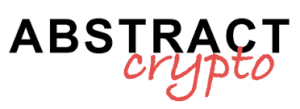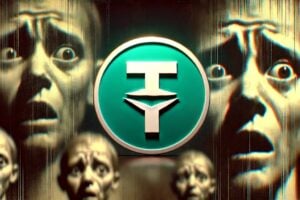In the latest article from the Wall Street Journal, Brian Armstrong, CEO of Coinbase, did not miss the opportunity to take cheap shots at Tether, generating an unjustified wave of FUD against the company and USDT, the largest stablecoin in the world. For the moment, these are just words in the wind, as there are not yet the elements to judge the company’s compliance with new potential U.S. regulations.
What does all this mean for USDT?
Let’s see all the details below.
Brian Armstrong ready to delist USDT if necessary: it’s immediately FUD on Tether
A few days ago, the WSJ published an article in which unjustified FUD (Fear, Uncertainty and Doubt) was spread about Tether and its stablecoin USDT. In the daily, it was mentioned how Brian Armstrong, CEO of the exchange Coinbase, would be ready to delist the coin if necessary.
The trigger for this strong statement lies in the possibility that the United States will begin to adopt a stricter regulatory framework in the stablecoin field. In that case, if Tether fails to comply with the new potential regulation, Coinbase might be forced to make difficult decisions.
In fact, USDT represents the most liquid and widespread stablecoin in the crypto world, with a strong presence in the main trading pairs of exchanges. For Coinbase, delisting the Tether coin would mean giving up the presence of an extremely widespread and appreciated product in the sector.
In any case, the compliance policy with American laws would leave Coinbase no other choice but delisting, should USDT fail to comply. Armstrong’s observations on the possibility of such a situation came just a month after the delisting of USDT in the European territory due to the uncomfortable implications of the MiCA.
The CEO of the crypto exchange emphasized, however, that they will continue to provide USDT services to customers to facilitate their off-ramping to other compliant assets.
This is what Armstrong reported regarding the Tether issue:
“There are many people with tethering and we want to offer them a way out, if we want to help them switch to a system that we believe is more secure.”
The potential change of the stablecoin regulatory landscape in the USA
Coinbase believes that the United States government will soon enact a new stablecoin reform that will have negative effects on Tether and on USDT. Under the new Trump administration, it is thought that two bills will be approved that require stablecoin issuers to hold US Treasury securities.
In particular, in this context, the bipartisan bill published by Senators Cynthia Lummis and Kirsten Gillibrand, called “Payment Stablecoin Act” finds its place. It is a regulatory framework that aims to establish clear rules for stablecoins, with the goal of protecting investors and promoting digital innovation.
Inside it is clearly stated how all those coins that do not have 1:1 collateral with deposits in American bonds would be outlawed. Furthermore, the bill includes measures to ban algorithmic stablecoins and prevent illicit use through off-shore channels.
According to what Armstrong understood, this evolution of the regulatory landscape could have negative implications on Tether. Coinbase might side with the regulators and delist USDT even in the United States, after cutting ties with the European markets.
One of the major criticisms leveled at Tether is that its quarterly attestations, published through BDO Italia, lack full audits. Additionally, observers argue that the reports may not meet the stringent standards that will likely be set by the new U.S. legislation
In any case, despite the complex issue, it seems that in the United States neither of the two bills that were being discussed has made significant progress.
The conflict of interest and the FUD on Tether and the leading stablecoin USDT
At the moment, all the concerns of the CEO of Coinbase seem to be directed towards the spread of a FUD campaign against Tether. While emphasizing how the new stablecoin regulation in the USA is still a mirage, we point out how Tether would not have many difficulties in becoming compliant with the rules.
At this moment, in fact, according to the report on USDT reserves, the company holds 83.89% of its reserves in “Cash & Cash Equivalents & Other Short-Term Deposits”. This category includes 80.32% US government securities, and for the remaining part, short-term deposit solutions that are easily liquidated.
Source: https://tether.to/en/transparency/?tab=reports
This means that to adapt to the potential regulatory change, it should only convert the remaining slice of collateral, currently in the form of precious metals, Bitcoin, secured loans, and other investments.
We are talking about a small portion of Tether’s assets, so it is easy to think that the company would easily comply if necessary. Furthermore, we must note how the FUD about Tether does not take into account the 6 billion dollars in assets, with a substantial difference between collateral assets and liabilities.
At the moment, therefore, the difficulties for the stablecoin issuer seem to be limited only to Europe, where the MiCA imposes onerous deposits at EU circuit banks. In the United States, this problem currently does not exist, and it will not arise even in the event of an evolution in the regulatory scenario.
Not everyone may know that between Brian Armstrong of Coinbase and the issue of FUD on Tether, there is a significant conflict of interest hidden. Coinbase, in fact, is a minority shareholder of Circle, a company that competes with Tether and issues and manages the stablecoin USDC, from which it boasts significant revenues in its annual financial statements.
Clearly the exchange is interested in giving more visibility to USDC, offering a dystopian view of the current situation of USDT in the United States.


